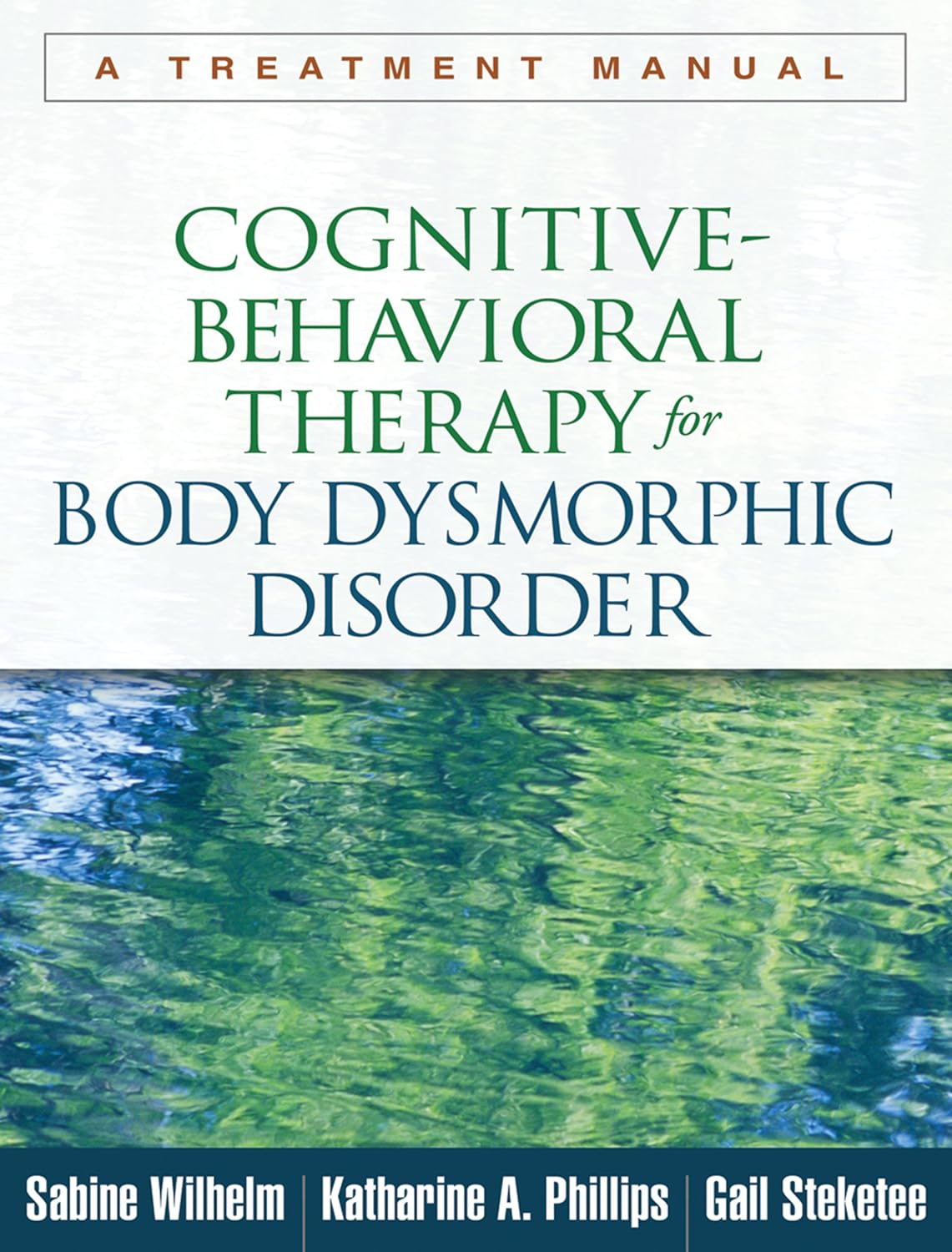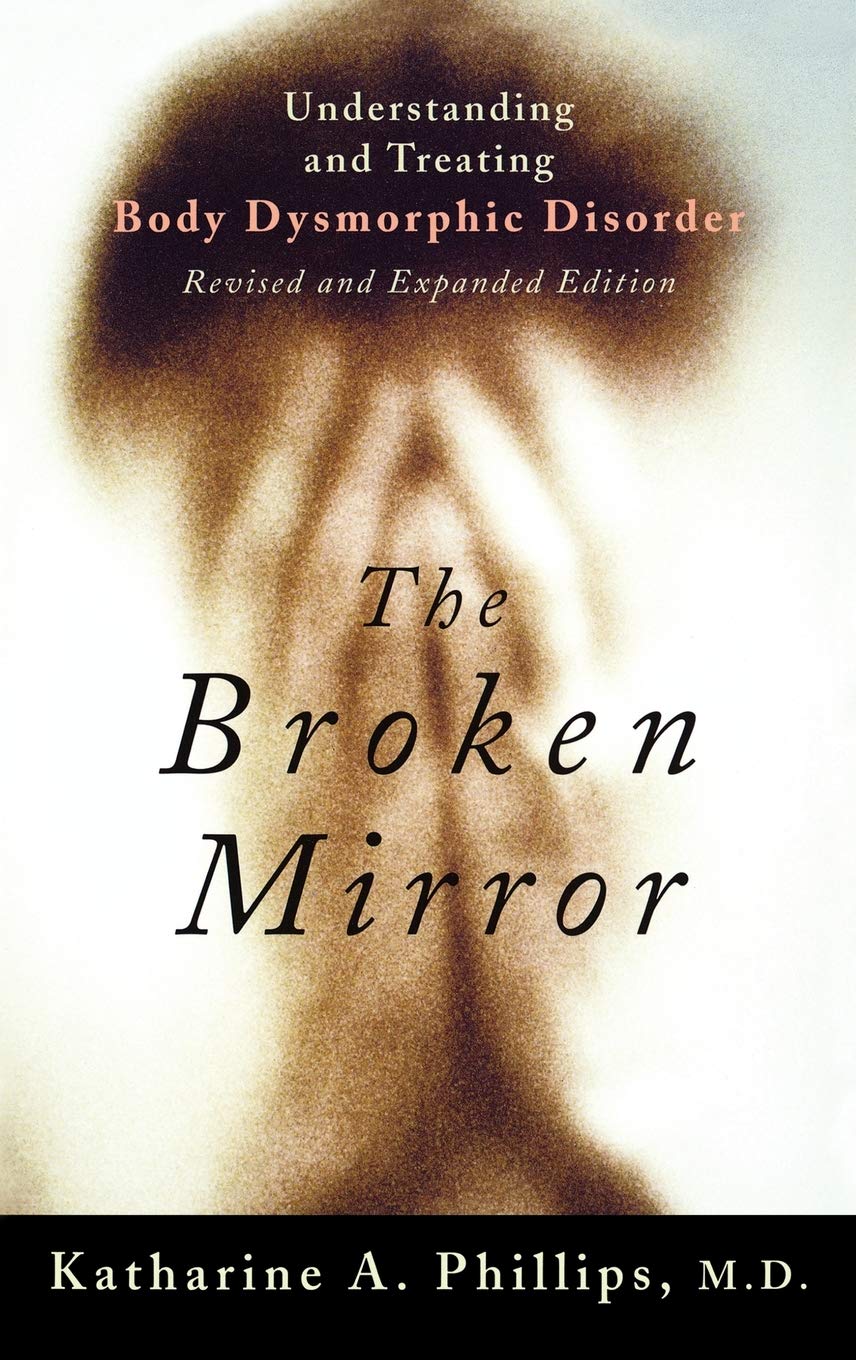Table of Contents
Body Dysmorphic Disorder (BDD)
Primer
Body Dysmorphic Disorder (BDD) (formerly known as dysmorphophobia) is an obsessive-compulsive and related disorder characterized by the obsessive idea that an aspect of one's own body part or appearance is severely flawed and warrants exceptional measures to hide or fix the dysmorphic part. Individuals are preoccupied with perceived flaws in their physical appearance that are not observable (or appear only slight to others). In addition, there are repetitive behaviors (e.g. - mirror checking, excessive grooming, skin picking, or reassurance seeking) or mental acts (e.g. - comparing one's appearance to others) in response to the appearance concerns.
Epidemiology
- The lifetime prevalence of BDD is approximately 2%, with an almost equal distribution between genders.[1]
- The prevalence can be as high as 9 to 15% among dermatology patients, and 3 to 16% among international cosmetic surgery patients.[2]
- Males are more likely to have genital preoccupations, while females are more likely to have a comorbid feeding or eating disorder.[3]
- Muscle dysmorphia occurs almost exclusively in males.
Prognosis
- The average age of onset is 16 years, and more than 2/3 have onset before age 18.[4]
- BDD is associated with higher levels of anxiety, social anxiety, social avoidance, low mood, neuroticism, and perfectionism.[5]
- Impairment can range from mild to moderate (e.g. - avoiding social situations) to extreme and incapacitating (e.g. - being completely housebound).
- BDD is usually be chronic, but improvement is probable when evidence-based treatments are given. It is estimated that 27 to 39% are delusional in their beliefs (false, fixed beliefs).[6]
Comorbidity
-
- Major depressive disorder is the most common comorbid disorder, with onset usually after that of body dysmorphic disorder.[7]
- Rates of suicidal ideation and suicide attempts are high in BDD, and individuals attribute suicidal behaviours primarily to due to the appearance concerns.[8]
Risk Factors
- BDD is associated with a prior history of experiencing childhood neglect and abuse.
- The risk of BDD is also higher in individuals with first-degree relatives who also have obsessive-compulsive disorder.
DSM-5 Diagnostic Criteria
Criterion A
Preoccupation with 1 or more perceived defects or flaws in physical appearance that are not observable or appear slight to others.
Criterion B
At some point during the course of the disorder, the individual has performed repetitive behaviors (e.g. - mirror checking, excessive grooming, skin picking, reassurance seeking) or mental acts (e.g. - comparing his or her appearance with that of others) in response to the appearance concerns.
Criterion C
The preoccupation causes clinically significant distress or impairment in social, occupational, or other important areas of functioning.
Criterion D
The appearance preoccupation is not better explained by concerns with body fat or weight in an individual whose symptoms meet diagnostic criteria for an eating disorder.
Specifiers
Specifier
- With muscle dysmorphia: The individual is preoccupied with the idea that his or her body build is too small or insufficiently muscular. This specifier is used even if the individual is preoccupied with other body areas, which is often the case.
Insight Specifier
Indicate degree of insight regarding body dysmorphic disorder beliefs (e.g. - “I look ugly” or “I look deformed”).
- With good or fair insight: The individual recognizes that the body dysmorphic disorder beliefs are definitely or probably not true or that they may or may not be true.
- With poor insight: The individual thinks that the body dysmorphic disorder beliefs are probably true.
- With absent insight/delusional beliefs: The individual is completely convinced that the body dysmorphic disorder beliefs are true.
Muscle Dysmorphia
- Muscle dysmorphia is a form of BDD that occurs almost exclusively in males, and individuals are preoccupied with the idea that their body is too small or not lean enough or muscular enough. Ironically, individuals actually have a normal-appearing body, or may already even be muscular. Most will also exercise or lift weights excessive, sometimes to the point of causing physical injury.
- Individuals are also at a higher risk for anabolic steroid misuse or use other substances to enhance musculature[9]
Signs and Symptoms
- Concerns from individuals with BDD may range from thinking they look “unattractive” or “not right” to looking “hideous” or “like a monster.”[10]
- The preoccupations with physical appearance must be intrusive (i.e. - unwanted) and time-consuming (occurring, on average, 3-8 hours per day)[11]
- Common behaviors seen in BDD may include:[12]
- Comparing one's appearance with other individuals
- Seeking reassurance about how the perceived flaws look
- Excessively tanning to darken skin
- Touching and checking disliked areas to check them
- Repeatedly checking for perceived defects in mirrors or examining them directly
- Excessive grooming (e.g. - styling, combing, shaving, plucking, or pulling hair)
- Camouflaging (e.g. - repeatedly applying makeup or covering disliked areas with such things as a hat, clothing, makeup, or hair)
- Excessively exercising or weight lifting (in muscle dysmorphia)
- Seeking and repeatedly requesting cosmetic procedures
Screening and Rating Scales
Body Dysmorphia Scales
| Name | Rater | Description | Download |
|---|---|---|---|
| Yale-Brown Obsessive Compulsive Scale modified for Body Dysmorphic Disorder (BDD-YBOCS) | Clinician | The BDD-YBOCS is a 12-item semi-structured clinician-rated instrument designed to measure severity of BDD symptoms in individuals showing excessive preoccupation and subjective distress with physical appearance |
Pathophysiology
- BDD is associated with abnormalities of the visual processing and frontostriatal systems. fMRI studies have suggested hypoactivation in the occipital cortex for low spatial frequency faces, which may indicate either primary visual system abnormalities for configural face elements or top-down modulation of visual processing.[13]
Differential Diagnosis
- Normal appearance concerns and clearly noticeable physical defects
- BDD differs from normal appearance concerns in that there is excessive appearance-related preoccupations and repetitive behaviours that are time-consuming. Additionally, the behaviours are usually difficult to resist or control, and cause clinically significant distress or impairment in functioning. Any physical defects that are clearly noticeable (i.e. - not slight) are not diagnosed as body dysmorphic disorder. However, skin picking as a symptom of body dysmorphic disorder can cause noticeable skin lesions and scarring (in these cases, body dysmorphic disorder should be diagnosed).[14]
-
- In eating disorders, concerns about being fat are considered a symptom of the eating disorder rather than body dysmorphic disorder. However, weight concerns may occur in body dysmorphic disorder. Eating disorders and body dysmorphic disorder can be comorbid as well.
-
- The preoccupations and repetitive behaviors of BDD differ from obsessions and compulsions in OCD in that the former focus only on appearance. These disorders have other differences, such as poorer insight in BDD.
-
- When skin picking is intended to improve the appearance of perceived skin defects, body dysmorphic disorder, rather than excoriation (skin-picking) disorder, is diagnosed.
-
- When hair removal (plucking, pulling, or other types of removal) is intended to improve perceived defects in the appearance of facial or body hair, BDD is diagnosed rather than trichotillomania (hair-pulling disorder).
-
- Individuals with BDD are not preoccupied with having or acquiring a serious illness and do not have particularly elevated levels of somatization.
-
- Social anxiety and avoidance behaviours are common in BDD. However, unlike in social anxiety disorder (social phobia), agoraphobia, and avoidant personality disorder, BDD also includes prominent appearance-related preoccupations (which may be of delusional intensity) and repetitive behaviors. The social anxiety and avoidance are due to concerns about perceived appearance issues and the belief or worry that other people will consider these individuals ugly, ridicule them, or reject them be cause of their physical appearance. Unlike generalized anxiety disorder where anxiety is broad and pervasive, anxiety and worry in BDD focuses on perceived appearance flaws.
-
- The prominent preoccupation with appearance and excessive repetitive behaviors in BDD differentiates it from a major depressive disorder. However, depressive symptoms are common in individuals with BDD, often secondary to the distress and impairment from the body dysmorphia.
-
- Many individuals with BDD have delusional appearance beliefs (i.e. - completely fixed beliefs that their view of their perceived defects is accurate), which is diagnosed as BDD, with absent insight/delusional beliefs, and not as delusional disorder. Appearance-related ideas or delusions of reference are common in BDD but unlike schizophrenia or schizoaffective disorder, it involves prominent appearance pre-occupations and related repetitive behaviors. Conversely disorganized behaviours and other psychotic symptoms are absent (except for appearance beliefs, which may be delusional).
-
- BDD should not be diagnosed if the preoccupation is limited to discomfort with or a desire to be rid of one's primary and/or secondary sex characteristics in an individual with gender dysphoria.
-
- If the preoccupation focuses on the belief that one emits a foul or offensive body odour as in olfactory reference syndrome (not a DSM-5 disorder), BDD should not be diagnosed.
- Body identity integrity disorder (apotemnophilia)
- Apotemnophilia (which is not a DSM-5 disorder) involves a desire to have a limb amputated to correct an experience of mismatch between a person's sense of body identity and his or her actual anatomy. However, the concern does not focus on the limb's appearance, as it would in body dysmorphic disorder.
- Koro (dhat syndrome)
- Koro is a culturally-related disorder that usually occurs in epidemics in Southeastern Asia, consists of a fear that the penis (in males), or the labia, nipples, or breasts (in females) is shrinking or retracting and will disappear into the abdomen, often accompanied by a belief that death will result. Koro differs from BDD, including a focus on death rather than preoccupation with perceived unattractiveness.
- Dysmorphic concern
- Dysmorphic concern (not a DSM-5 disorder) is a much broader construct than, and is not equivalent to, BDD. It involves symptoms reflecting an overconcern with slight or imagined flaws in appearance.[15]
Treatment
Psychotherapy
- Cognitive behavioural therapy consisting of exposure to social situations, identification of safety behaviours, and resisting compulsions (i.e. - mirror-checking, reassurance seeking) are effective.
Pharmacotherapy
- Symptoms of body dysmorphic disorder are generally more responsive to fluoxetine and clomipramine, with a potential role for augmentation with antipsychotics.[16]
- A trial of medication may require up to 12 to 16 weeks, and SSRI doses are usually are higher (just like in OCD) than those required to treat depression.
- There is a very small case–report literature on the use of electroconvulsive therapy in body dysmorphic disorder, typically in the context of comorbid depression.[17]
Guidelines
Guidelines
| Guideline | Location | Year | Website | |
|---|---|---|---|---|
| National Institute for Health and Care Excellence (NICE) | UK | 2005 | - | Link |

